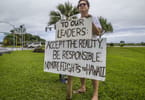The World Health Organization (WHO) urges affected countries to scale up their investment in tackling 17 neglected tropical diseases in order to improve the health and well-being of more than 1.5 billion people. This investment would represent as little as 0.1% of current domestic expenditure on health in affected low- and middle-income countries for the period 2015-2030.
Neglected tropical diseases cause blindness, disfigurement, permanent disability and death, particularly among the poor. WHO’s new report, Investing to Overcome the Impact of Neglected Tropical Diseases, outlines an investment case and essential package of interventions for these diseases.
“Increased investments by national governments can alleviate human misery, distribute economic gains more evenly and free masses of people long trapped in poverty,” says WHO Director-General Dr Margaret Chan.
Progress
The report highlights progress made in recent years, largely attributed to a scale-up of control interventions in reaching the poorest. For example, in 2012 alone, more than 800 million people were treated for at least one neglected tropical disease. In 2014 there were just 126 cases reported of Dracunculiasis (guinea-worm disease), compared to almost 1800 in 2010 and 3.5 million in the mid-1980s. Eradication of this disease is achievable with continued effort and investment.
Need for increased domestic investment targets
The report sets specific investment targets for many of the 17 diseases. It stresses that countries must make firm and sustainable budgetary commitments if they are to meet WHO targets and accelerate progress.
The investments:
An annual investment of US$ 2.9 billion until 2020 (including vector control), is required to reach targets set in 2012 in the WHO Roadmap for 2015-2020.
For the following 10 years (2021-2030), investment requirements will drop to US$ 1.6 billion per year. Annual investments will continue to decrease as diseases are reduced or eliminated.
This adds up to a total investment of US$ 34 billion (over 16 years) and excludes cost of donated medicines and other in-kind contributions.
The impacts:
By 2017, the number of people receiving preventive treatment for at least one of the diseases should reach 1.5 billion. As diseases are reduced or eliminated, the number of people needing and receiving treatment will obviously fall. Early detection of some neglected tropical diseases will allow more children to continue school and adults to work while reducing the costs associated with treating more advanced forms of these diseases.
Moving towards universal health coverage will ensure that all people have access to preventive and curative health services for neglected tropical diseases without the risk of financial hardship when paying for them.
Moving forward
In the face of climate change countries need to strengthen their ability to anticipate and meet new challenges in terms of vector ecology and management. Diseases spread by insects are on the move because of rapid and unplanned urbanization, population movement and environmental change. Dengue is one of them: it is now present in more than 150 countries.
“Some of the neglected tropical diseases are no longer strictly tropical,” says Dr Dirk Engels, Director of the WHO Control of Neglected Tropical Diseases Department. “The potential for spread provides yet another strong argument for making the needed investments – while ramping up research and development efforts – to bring all these diseases under control and eliminate as many of them as rapidly as possible.”
Many countries have recognized the importance and cost effectiveness of investing in preventing and treating neglected tropical diseases. More than 70 countries are already implementing or ready to kick off national plans for accelerated control.
Recent advances in combating neglected tropical diseases
In 2013, Colombia became the first country where WHO verified the elimination of river blindness (onchocerciasis), followed by Ecuador in 2014.
Bangladesh and Nepal are poised to eliminate visceral leishmaniasis as a public-health problem by the end of 2015.
The number of new cases of sleeping sickness (human African trypanosomiasis) has dropped to fewer than 10 000 annually and this for the first time in 30 years with 6 314 cases reported in 2013.
In 2009 approximately 30% of children in need of preventive treatment for soil-transmitted helminthiases were receiving it. Reaching 50% of children with this treatment by end 2015 is achievable.
WHAT TO TAKE AWAY FROM THIS ARTICLE:
- The number of new cases of sleeping sickness (human African trypanosomiasis) has dropped to fewer than 10 000 annually and this for the first time in 30 years with 6 314 cases reported in 2013.
- The World Health Organization (WHO) urges affected countries to scale up their investment in tackling 17 neglected tropical diseases in order to improve the health and well-being of more than 1.
- “The potential for spread provides yet another strong argument for making the needed investments – while ramping up research and development efforts – to bring all these diseases under control and eliminate as many of them as rapidly as possible.






















